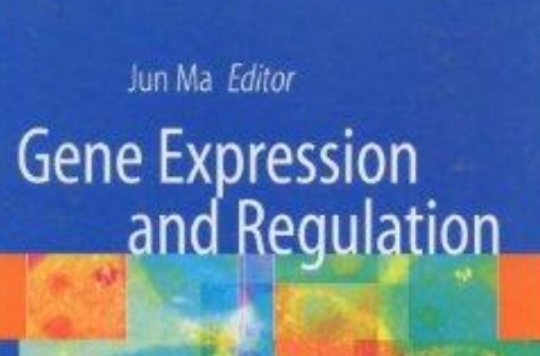《基因的表達與調控(英文版)》內容簡介:This book offers a comprehensive look into the science ofgene expression and regulation. Focusing on topics such asactions of nuclear receptors, RNA processing, and DNAmethylation and imprinting, Gene Expression andRegulation is edited by a leading biologist and includescontributions by experts in the field.
基本介紹
- 書名:基因的表達與調控
- 作者:馬駿
- 出版日期:2006年12月1日
- 語種:英語
- ISBN:7040176750, 9787040176759
- 外文名:Gene Expression and Regulation
- 出版社:高等教育出版社
- 頁數:582頁
- 開本:16
- 品牌:高教社
基本介紹
內容簡介
作者簡介
圖書目錄
Preface
Section Ⅰ The History
Chapter 01 Transcription: The Never Ending Story
Section Ⅱ The Machinery
Chapter 02 The General Transcription Machinery and Preinitiation Complex Formation
Chapter 03 The Dynamic Association of RNA Polymerase II with Initiation. Elongation, and RNA Processing Factors during the Transcription Cycle
Chapter 04 General Cofactors: TFIID, Mediator and USA
Chapter 05Chromatin and Regulation of Gene Expression
Chapter 06 HATs and HDACs 111
Chapter 07 Structure and Function of Core Promoter Elements in RNA Polymerase II Transcription
Section Ⅲ The Regulators
Chapter 08 Transcriptional Activators and Activation Mechanisms
Chapter 09 Transcriptional Repressors and Repression Mechanisms
Chapter 10 STATs in Cytokine-mediated Transcriptional Regulation
Chapter 11 Transcriptional Regulation by Smads
Chapter 12 The Rb and E2F Families of Proteins
Chapter 13 C-Jun: A Complex Tale of a Simple Transcription Factor
Chapter 14 HIV Tat and the Control of Transcriptional Elongation
Chapter 15 Post-translational Modifications of the p53 Transcription Factor
Chapter 16 Actions of Nuclear Receptors
Chapter 17 NFAT and MEF2, Two Families of Calcium-dependent Transcription Regulators
Chapter 18 Hox Genes
Chapter 19 Nuclear Factor-kappa B
Chapter 20 The ATF Transcription Factors in Cellular Adaptive Responses
Section Ⅳ The Genome
Chapter 21 Function and Mechanism of Chromatin Boundaries
Chapter 22 Heterochromatin and X Inactivation
Chapter 23 DNA Methylation Regulates Genomic Imprinting, X Inactivation, and Gene Expression during Mammalian Development
Chapter 24Comparative Genomics of Tissue Specific Gene Expression
Chapter 25 Transcription and Genomic Integrity
Chapter 26Cell Death and Transcription
Section Ⅴ Special Topics
Chapter 27 Pre-mRNA Splicing in Eukaryotic Cells
Chapter 28 Genome Organization: The Effects of Transcription-driven DNA Supercoiling on Gene Expression Regulation
Chapter 29 The Biogenesis and Function of MicroRNAs
Chapter 30 Transcription Factor Dynamics
Chapter 31 Actin, Actin-Related Proteins and Actin-Binding Proteins in Transcriptional Control
Chapter 32 Wnt Signaling and Transcriptional Regulation
Chapter 33 Regulatory Mechanisms for Floral Organ Identity Specification inArabidopsis thaliana
Chapter 34 Transcription Control in Bacteria
Chapter 35 Gene Therapy: Back to the Basics
序言
The book is composed of 35 individual review articles written by authorities in the field. The chapters areorganized into five sections: The History, The Machinery, The Regulators, The Genome, and Special Topics. TheHistory section contains one chapter, written by James Goodrich and Robert Tjian, who provide an excellenthistorical perspective and overview of the transcription process. The Machinery section has six chapters that coveressential topics on the transcriptional apparatus, general cofactors, chromatin structure, and core promoter structure.The Regulators section has thirteen chapters. While the first two of them investigate the mechanisms oftranscriptional activation and repression, the remaining eleven chapters discuss in depth selected gene-specifictranscription factors that play critical roles in a variety of biological processes, including STATs, Smads, NFvd3,nuclear receptors, NFAT, Rb, p53, HIV Tat, ATFs, c-Jun and Hox proteins. The Genome section contains six chaptersthat examine topics relevant to transcription regulation and genome behavior, including chromatin boundaries,heterochromatin, DNA methylation, genomic analysis, genomic integrity, and cell death. Finally, the Special Topicssection contains nine chapters that investigate such important issues as pre-mRNA splicing, DNA supercoiling,microRNA, transcription factor dynamics, role of actin in transcription, gene therapy, and transcription regulation inbacteria, plants and developmental signaling.
When Higher Education Press invited me to write a textbook for their Current Scientific Frontiers book seriestwo years ago, I did not think I had the time needed to tackle such a big project. Instead, I made a proposal——endorsedquickly by HEP——to explore the possibility of editing a book (resembling a textbook style) on the topic of geneexpression and regulation, with individual review articles written by experts in the field. Without the enthusiasticsupport and generous commitment from the contributors, this project would have never even started. I am deeplyindebted to all of them. Every chapter in this book is a scholarly work reflecting numerous hours of intense efforts ofthe contributors. I would like to express my special thanks to Cheng-Ming Chiang for generously contributing twoexcellent chapters, a few contributors for kindly agreeing to write on relatively short notice, and Gordon Hager forproviding the cover photo and design suggestions. I would also like to thank HEP for their flexibility and trust in thisproject, and the HEP and Springer editorial and design teams, in particular Li Shen at HEP, for their excellent work.Finally, I would like to thank Bingxiang Li at HEP for the countless email communications and her hard work——atevery step along the way——that made this book a reality.

